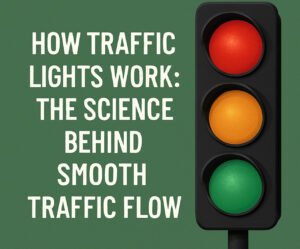In any setting where security, traffic control, or pedestrian safety is essential, installing steel bollards is a critical first step. Whether you’re using galvanized steel bollards for corrosion resistance, steel bollards concrete filled for impact protection, or relying on trusted brands like steelmark bollards, the key to performance lies in proper installation. Done right, bollards serve as silent guardians that manage movement, protect property, and keep people safe. Know more..
Why Steel Bollards Matter
Steel bollards are not just posts—they’re an essential part of modern infrastructure. In urban environments, retail parking lots, industrial zones, and even parks, the right bollard keeps pedestrians out of harm’s way, deters vehicle access, and offers structural protection to buildings.
Galvanized steel bollards are favored for their durability and weather resistance. In high-impact areas, steel bollards concrete filled provide enhanced strength. And for facilities looking for consistency and proven reliability, steelmark bollards offer standardized solutions backed by a reputable brand.
Step 1: Choose the Right Bollard for the Job
Before you begin installation, know your objective. Do you need to:
- Prevent vehicle intrusion?
- Direct pedestrian traffic?
- Protect infrastructure?
Galvanized steel bollards are ideal in outdoor spaces where exposure to the elements is high. Their zinc coating resists rust and corrosion. If impact protection is the main concern, go with steel bollards concrete filled. These are reinforced with concrete and built to withstand vehicle crashes.
For commercial clients or government contracts, steelmark bollards provide high-quality, pre-tested designs with options for removable, embedded, or surface-mounted installations.
Step 2: Plan and Measure Your Layout
Map out exactly where each bollard will go. Use tape or chalk lines to measure and align:
- Distance from curbs and structures
- Spacing between bollards (typically 3 to 5 feet)
- Depth of foundation (generally 18 to 36 inches)
Precise alignment ensures your galvanized steel bollards or steelmark bollards look professional and function correctly. Too wide, and they won’t stop vehicles; too close, and pedestrians can’t pass comfortably.
Step 3: Prepare the Site
Use a concrete saw or core drill to open holes where the bollards will be set. The depth and diameter depend on the bollard type and the level of impact resistance needed.
For steel bollards concrete filled, you’ll need deeper holes to accommodate both the bollard and enough concrete for stability. Make sure to clear debris and dust for a clean pour.
If installing steelmark bollards, refer to the brand’s installation manual, which provides step-by-step guidance including specifications for various soil and surface types.
Step 4: Secure the Bollards
For Embedded Installation:
- Place the bollard in the hole.
- Level it vertically using a spirit level.
- Pour concrete around the base, ensuring full coverage.
- Allow at least 24-48 hours for curing.
For Surface Mount:
- Position bollards on the surface.
- Mark drill holes through the baseplate.
- Drill into the concrete and insert anchors.
- Bolt the bollard securely.
This process works for both galvanized steel bollards and steelmark bollards, provided they’re designed for surface mounting.
For Concrete-Filled Bollards:
- Insert the hollow steel tube.
- Pour concrete into the bollard post.
- Cap the top or use a cover.
These steel bollards concrete filled create formidable protection against vehicle crashes. They’re ideal for storefronts, parking lots, or any vulnerable location.
Step 5: Finish and Maintain
After the bollards are installed and cured:
- Clean any excess concrete or debris.
- Paint or apply reflective tape if needed.
- Add protective sleeves or covers for aesthetics.
Galvanized steel bollards need minimal upkeep, but should still be inspected annually for corrosion or impact damage. Steel bollards concrete filled should be checked for cracks or settlement. Steelmark bollards, when installed per guidelines, often come with warranties and low maintenance requirements.
Key Locations for Bollard Installation
Properly installed steel bollards are valuable in:
- Storefronts to prevent smash-and-grab thefts
- Parking lot perimeters to manage traffic
- School zones and playgrounds to protect children
- Industrial areas with heavy machinery
- Government and military facilities for perimeter security
In each case, choosing the right type (like steel bollards concrete filled) and following a correct installation method ensures reliability.
Cost and Value Considerations
While galvanized steel bollards or steelmark bollards may have higher upfront costs, they often last longer and require less maintenance than plastic or wood alternatives.
DIY installation can save money, but for high-security or high-traffic areas, professional installation ensures compliance with building codes and safety standards.
Common Mistakes to Avoid
- Skipping measurements: Misaligned bollards don’t provide uniform protection.
- Underestimating depth: Especially for steel bollards concrete filled, shallow installs compromise strength.
- Not accounting for drainage: Water pooling can corrode bollards and weaken concrete.
- Neglecting local regulations: Check city codes for public safety requirements.
Sustainability and Recycling
Many galvanized steel bollards and steelmark bollards are made from recyclable materials. Replacing older posts with modern, impact-rated models can improve security and reduce environmental impact.
Final Thoughts
Steel bollards are a simple but essential part of urban safety. Whether you’re protecting a storefront, managing a crowd, or controlling vehicle access, the key is proper installation. Using the right product—whether galvanized steel bollards, steel bollards concrete filled, or trusted steelmark bollards—makes all the difference in performance and longevity.
Done right, they quietly provide safety, structure, and peace of mind. If you’re planning a project, investing in quality bollards and installing them correctly isn’t just smart—it’s necessary.





